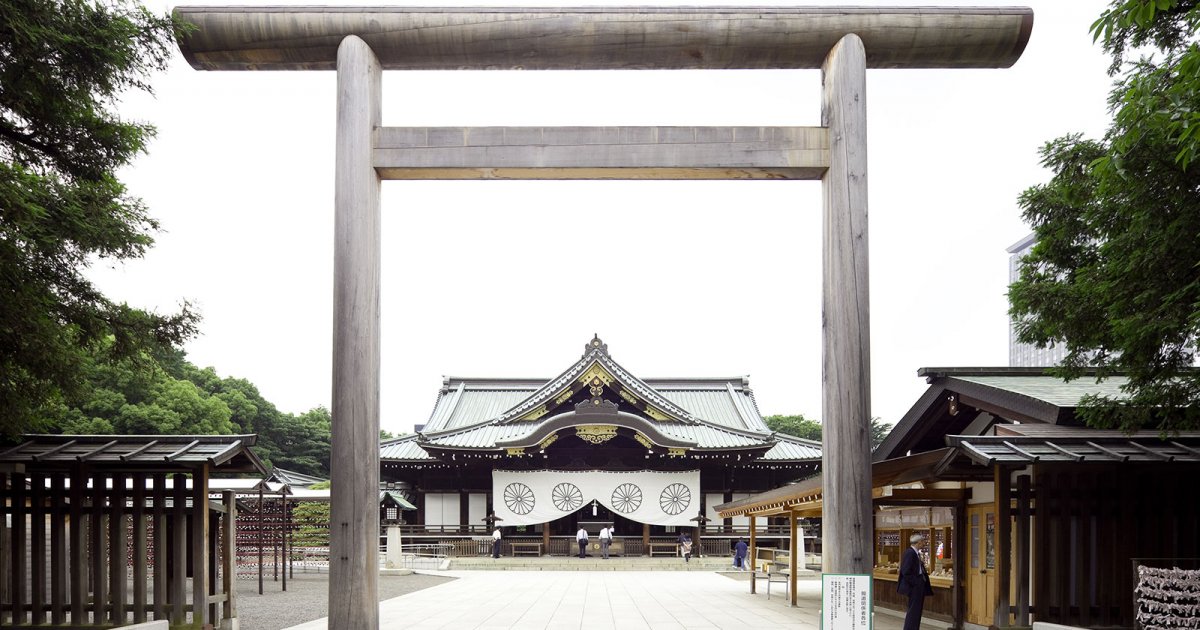YASUKUNI SHRINE, Temple Tour
 Language: English / USA
Language: English / USA
The Yasukuni shrine is a huge complex of buildings and gardens that’s well worth a leisurely visit, so that you can enjoy the atmosphere of peace and tranquility, as well as the beauty of the place.
Like all shrines, the way into the Yasukuni is through the typical Japanese sacred gateway, or Torii, made up of two vertical poles supporting a third, horizontal one. The first of these you’ll come to was the largest in Japan when it was built in 1921, measuring 25 meters high and 34 meters wide. This is a copy of the original, however, which was destroyed. The gate leads into a tree-lined path that ends with a second Torii, which, although smaller, is the largest ever to have been crafted in bronze.
Remember to cleanse your mouth and hands in the granite basin on your left before you go through the entrance to the main gate, called Shinmon, built entirely in cypress wood. Once you go through the gateway, with two marvelous, one-and-a-half-meter yellow chrysanthemum crests on the doors, you’ll find yourself in a large garden of cherry trees in front of the actual shrine.
On the left, you’ll see two buildings that contain offices, while on the right is a small Noh Theater, where performances are held in honor of the souls of those who died in battle.
A third Torii in cypress wood will lead you to the main hall, decorated with a large white curtain featuring a pattern of stylized chrysanthemums, the symbol of the emperor. Opposite it is a wooden box for donations. Here, you can attend a number of ceremonies performed by religious and civilian authorities in honor of the ancestral deities worshipped in the temple.
On the right is a large waiting room, as well as another building to welcome the numerous pilgrims; over five million flock here every year.
The main hall leads onto another courtyard that leads into the heart of the shrine, dating to 1872 and restored in 1989, which, according to the Shinto religion, is the dwelling place of the ancestral deities, i.e. the souls of the dead. Tourists, however, are not allowed entry.
An interesting fact: in April 2014, the singer Justin Bieber visited the Yasukuni and posted a photo of it on Internet, drawing criticism from his Chinese, Japanese and Korean fans. Bieber claimed he hadn’t realized the temple was visible in the background…



